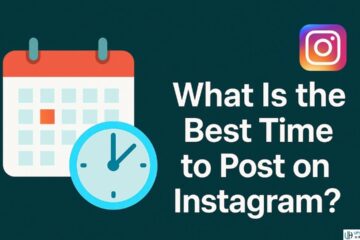Struggling to make your LinkedIn profile stand out as a student? Consider this: over 30 million students and recent grads are already leveraging LinkedIn.
This article will guide you through crafting an eye-catching LinkedIn headline that showcases your unique value, helping set you apart in the job market.
Let’s get started!
Key Takeaways
- Your LinkedIn headline tells the world about your skills and goals. Use it to stand out from other students.
- Include keywords related to your field in your headline. This makes it easy for employers to find you.
- Show what makes you unique, like being a coding master or having a talent for design.
- Avoid using too many capital letters, emojis, slang, and spelling errors in your headline.
- Change your LinkedIn headline as you gain more experience or new skills.
Understanding LinkedIn Headline for Students
A LinkedIn headline for students is more than just a job title. It’s a powerful tool to tell the world who you are and what you bring to the table. With over 30 million students on LinkedIn, your headline helps you stand out in a crowd.
It should say clearly what you do or what you aim to do, your skills, and even your career goals. Think of it as a brief ad about yourself.

Your headline can include keywords related to your field like “digital marketing” or “computer science.” This makes sure that when employers search those terms, they find you. You want to make it easy for hiring managers and mentors to search through LinkedIn to spot your profile first.
Keep it simple but punchy. Make every word count towards showcasing who you are professionally.
Importance of LinkedIn Headline for Students
Your LinkedIn headline grabs attention first. It shows off your skills and dreams to people who see your profile. This small line of text makes a big difference in social media and job seeking worlds.
For students, having a strong headline can set you apart from others. It adds to your credibility and presents you as an expert in your field, even before you graduate.

A well-crafted headline helps you appear higher in search results on Google and LinkedIn. Recruiters use these platforms to find new talent every day. If your headline has the right keywords related to your field, like “aspiring software engineer” or “graduate student passionate about green building,” it’s more likely that recruiters will notice you.
This is how you start making connections and finding opportunities that fit what you want to do with machines learning, risk management, sustainability practices, or any other area that excites you.
Guidelines for Writing an Effective LinkedIn Headline for Students
Learn how to write a strong LinkedIn headline that shows off your strengths and interests. Get ready to stand out to people who might want to offer you jobs or internships.
Showcase your value proposition
Your value proposition is like your secret weapon. It tells the world what makes you different and better than other job seekers. Think of it as showing off your superpowers. Are you a master at coding? Or maybe you have a talent for designing beautiful things? Whatever it is, make sure to put it front and center in your headline.
This will grab attention and show potential employers exactly why they need you.
Next, be specific about what you offer and what you’re looking for. Use industry keywords that people might use on Google when searching for someone with your skills. This strategy helps your profile pop up in search results more often, increasing the chances of getting noticed by the right people.
Now, let’s move on to being specific about your capabilities and goals.
Being specific
After you’ve made clear what unique value you bring, it’s time to be specific about your skills and ambitions. Mention the exact area you are focusing on, like renewable energy or machine learning.
This helps people understand quickly what sets you apart in your field. Instead of saying “student interested in technology,” say “software engineering student with a focus on automation.” This gives a clearer picture of where your interests lie.

Use keywords that match job postings or fields you’re into. If you’re looking at careers in public relations, including phrases related to communication skills or media management. Being specific makes it easier for others in your industry to find and connect with you on LinkedIn.
It also improves your chances of showing up in Google searches when companies look for potential candidates with your exact skill set.
Using the right keywords
Being specific sets the stage. Next comes picking the right keywords. Keywords are like keys that unlock doors. They can help your LinkedIn headline stand out in a sea of others. Think about words that show what you’re great at.
If you love coding, “Java expert” could be a powerful keyword for you.
Choose words that make your profile pop up in searches. Recruiters often look for terms like “sales leader” or “creative thinker.” Use words from job postings and industry news to make your headline shine.
This way, employers and recruiters will see you as credible and skilled in your area.
Making it relevant to your audience
Make your LinkedIn headline grab the attention of those you want to impress. Think about what employers or schools in your field care about. Are they looking for creativity? Leadership skills? Show how you fit into their world with just a few words.
Use terms that experts, like hiring managers and school admissions officers, will notice. For example, if you’re an engineering student interested in solar energy, talk about your project experiences with sustainable power options instead of just saying “engineering student.”.
Craft a headline that speaks directly to potential network connections and opportunities. Highlight skills or achievements using language familiar on professional networks and social media platforms.
If you’re aiming for jobs in corporate communications or startups, mention any relevant work like marketing campaigns or innovative projects you’ve been part of. This approach not only shows your expertise but also demonstrates how well you understand and can contribute to specific industries.
Being honest
After focusing on your audience, it’s crucial to be honest in your LinkedIn headline. Lying or exaggerating about your skills can harm your professional brand. If you say you’re an expert in artificial intelligence but only took one introductory course, people will find out.
Trust is key in the professional world. Your headline should reflect the true level of work experience and education you have.
This honesty shows confidence in what you truly offer. It builds a strong foundation for your personal brand. People respect honesty and are more likely to connect with someone who is genuine about their abilities and experiences.
Even if you’re just starting, being sincere about where you’re at can open doors to opportunities perfect for your real skill level.
What to Avoid in Your LinkedIn Headline

Crafting your LinkedIn headline needs care and thought. Your headline acts as a quick snapshot of your professional identity, attracting the right attention in job hunts or when building your network. Here are key things to avoid:
- Too many capital letters: Using TOO MANY CAPITAL LETTERS looks like shouting. It can push people away instead of drawing them in. Keep your headline easy on the eyes by using normal capitalization.
- Filling it with emojis and slang: While it’s fun to use emojis and slang with friends, your LinkedIn headline is not the place for them. Stick to clear, professional language that shows you’re serious about your career.
- Leaving it empty: An empty headline is a missed opportunity. It defaults to your current position, which might not fully represent your skills or ambitions. Fill it with keywords that highlight what you bring to the table.
- Cryptic words or phrases: Avoid being too mysterious or using jargon that only a few understand. Your headline should be clear and understandable to everyone, even those outside your field.
- Spelling and grammatical errors: Errors make you look careless and can hurt your professional image. Always check your spelling and grammar before saving your headline.
- Controversial topics: Stay away from controversial subjects in your headline. You want to appeal to as broad an audience as possible without offending potential connections or employers.
Remember, crafting a standout LinkedIn headline is about showcasing your unique value proposition in a clear, professional way that makes people want to learn more about you.
Tips for Choosing the Right Keywords for Your LinkedIn Headline
Choosing the right keywords for your LinkedIn headline helps you stand out and get noticed. Your headline should highlight your skills, value, and what makes you unique. Here are tips to pick the best keywords:
- Think about what job recruiters search for. Use words from job postings that fit your goals.
- Look at profiles of people who have the jobs you want. See which keywords they use in their headlines.
- Use Jobscan’s LinkedIn Optimization tool. It checks if your headline has strong keywords for your industry.
- Tap into tools that show which words pop up often in job ads, like Google Keyword Planner. This helps you find common terms in your field.
- Add specifics to stand out more. Instead of “student,” say “Mechanical Engineering Student” or “Graphic Design Intern.”
- Include skills and tools you’re good at. Words like “CSS3” or “neuroscience” make it clear what you can do.
- Mix general and specific keywords. Have a balance between broad terms like “graduate student” and niche ones like “solar cells researcher.”
- Update your headline as you gain more experience or change paths. Keep it fresh with new skills or achievements.
- Avoid jargon only a few would understand unless it’s key for the roles you seek.
- Use hashtags wisely to join bigger conversations, but don’t overdo it.
The next step is learning how to effectively change your LinkedIn headline.
LinkedIn Headline Examples for Students
Check out different LinkedIn headlines that make students shine. These examples help you stand out in job hunts and google searches.

Students with No Experience
If you’re a student with no work experience, your LinkedIn headline needs to stand out. Think about what makes you unique. Do you have skills in writing or group projects? Are you good at problem-solving or creative thinking? Use these traits in your headline.
Make sure it shows who you are and the value you bring, even without job history.
You might feel unsure about what to write since you don’t have job experiences like internships yet. It’s okay! Focus on your academic achievements, any volunteer work, clubs, or sports teams you’re part of.
These activities show teamwork, leadership, and other important skills employers look for. Use keywords related to these skills in your headline to catch the attention of recruiters—95% of them use LinkedIn to find candidates just like you.
College Students
College students stand at a critical juncture. They are ready to leave their mark in fields like technology law, social psychology, and the energy sector. Crafting a LinkedIn headline that captures who they are and what they aspire to become is key.
They should focus on showcasing their major, any relevant projects or positions held in student organizations, and what kind of opportunities they seek. Using action verbs and including keywords from job listings can make a big difference.
For those studying aircraft design or electrical engineering, it’s vital to highlight any hands-on projects or competitions you’ve been part of. Mentioning your involvement in multimedia presentations or leadership roles within relevant clubs can also catch the eye of recruiters searching for fresh talent.
Up next: tips for students with internship experience to craft their LinkedIn headlines effectively.
Students with Internship Experience
Your internship experience is a huge advantage. Show it off in your LinkedIn headline to catch the eye of job hunters. Almost every recruiter uses LinkedIn to find new talent. This means your headline needs to make you stand out as a strong candidate.
Use words related to your field and the skills you’ve honed during your internships. Be specific about what you did and how it adds value. For example, if you helped improve sales numbers or designed a successful circuit, mention these achievements.
Using keywords like “intern,” “project management,” or specifics like “social media marketing” can help too. These terms grab attention and make it clear what you bring to the table.
Keep everything short, sweet, and to the point for the best results.
Next up: see how students in different fields craft their LinkedIn headlines.
LinkedIn Headline Examples for Students by Fields
Check out different headline ideas for students studying various subjects. This helps you stand out in your field.

Engineering Students
Engineering students stand out by showcasing their skills in headlines. For example, a mechanical engineering student might say they are skilled at creating products and building models.
An aerospace engineering major could highlight their knowledge in airplane design and how things move through air. Electrical engineering students may focus on building electronic systems and making machines work automatically.
These examples help future engineers show what makes them unique.
Using the right keywords is also key for job hunting on LinkedIn. Engineering students should include terms like “product design,” “aerodynamics,” and “circuit design” in their headlines.
This makes it easier for companies to find them when searching for new talent online. By being specific about their field of study and expertise, engineering students can attract more attention from potential employers looking for fresh minds in the industry.
Computer Science Students
Moving from engineering to computer science, students in this field also need catchy LinkedIn headlines. For these students, highlighting their skills and experiences is key to attracting the right attention.
They must use specific terms and keywords that speak the language of the tech industry. This will help them stand out in recruiter searches.
Computer Science students should focus on creating a professional brand on LinkedIn. They can achieve this by using jargon and keywords related to programming, software development, and data analysis in their headlines.
Choosing effective keywords is essential for showing up in job searches made by recruiters looking for fresh talent in the tech world.
Finance Students
Finance students should focus on headlines that showcase their skills in money management, budgeting, and financial forecasting. For example, they could write: “Eager finance major ready to apply skills in economic analysis and portfolio management.” This tells potential employers or connections exactly what the student is studying and what they are passionate about.
Use powerful keywords related to finance like “risk management,” “financial planning,” or “investment strategies” to catch the eye of recruiters scanning their LinkedIn for fresh talent.
Including terms from job descriptions or industries where a student wants to work will help them stand out. Making it clear that one has ambitions in the financial sector can open doors even if they’re just starting out.
Graphic Design Students
Graphic design students should highlight their creativity and technical skills in their LinkedIn headlines. Mention any experience with design software like Adobe Photoshop or Illustrator to show expertise.
Add terms like “aspiring graphic designer” or “skilled in visual communication” to grab attention. Focus on strengths, whether it’s logo creation, digital art, or brand development.
These specifics make a headline stand out.
Good LinkedIn headlines also include key achievements or projects. For example, if you’ve won a design contest or worked on notable marketing campaigns, say so. This proves your abilities and dedication to your field.
Choose words that reflect your passion for design and eagerness to innovate in the industry of visual arts.
Psychology Students
Psychology students can make their LinkedIn profiles stand out by crafting strong headlines. Your headline should tell who you are, what value you bring, and what you aim to find in your career.
For example, use phrases like “Aspiring Clinical Psychologist Seeking Internship Opportunities” or “Passionate about Mental Health Advocacy and Research.” This approach establishes your expertise and makes clear your professional goals.
Choosing the right words is key for psychology students on LinkedIn. Use terms related to cognitive science, therapy techniques, or mental wellness to catch the eye of potential employers or grad schools.
Remember to be honest about your experiences and interests. Next up: Education Students.
Education Students
Education students should highlight their commitment to shaping future minds. They can mention classes they’ve taken on instructional design and any teaching practice they have, even if it’s just tutoring or volunteer work.
Their LinkedIn headline could say “Aspiring Elementary School Teacher | Specializing in Modern Instructional Techniques | Passionate about Student Engagement.” This tells viewers what they’re aiming for, skills they’re developing, and their area of interest within education.
Next up are healthcare students ready to make a difference in people’s lives every day.
Healthcare Students
Healthcare students should create LinkedIn headlines that highlight their specific fields of interest and experience. For example, a recent nursing graduate can say they have a passion for pediatric care.
This shows future employers what area they excel in. Another student might focus on cardiology or community wellness. Using terms like “medical student specializing in cardiology” or “public health student with a focus on community wellness” makes their profile stand out to people looking for those skills.
Choosing the right words for your headline is key. Words like “graduate,” “specializing,” and “passion” catch attention and make it clear what you offer. Always be honest about your level of experience and training in healthcare fields like nursing, medicine, or public health.
Let’s move on to how you can change your LinkedIn headline easily.
How to Change Your LinkedIn Headline
Changing your LinkedIn headline can make a big difference in how people see your profile. Here are simple steps to update it:
- Open LinkedIn and sign in to your account.
- Click on your profile picture or icon at the top of LinkedIn’s homepage to go to your profile.
- Look for the blue “Edit” button near your profile picture and click it.
- Your headline is right under your name. Click on the pencil icon next to it.
- Delete what’s currently there and type in your new headline.
- Use 220 characters wisely to say who you are, what you offer, and what you’re looking for.
- Add words that job-seekers or salespeople might search for on Google or LinkedIn.
- Avoid using the default title LinkedIn gives because it doesn’t show off your unique skills or goals.
- Once you’re happy with it, press “Save” to update your headline.
Now, others will see this new headline when they visit your profile or find you in search results.
Conclusion
Crafting a standout LinkedIn headline needs thought and creativity. You must show who you are, what you bring to the table, and your goals. Pick words that match job hunts and areas you like.
Avoid making things up. Change your headline with new experiences or skills. With these tips, your LinkedIn profile will shine brighter in searches.
Your future starts with one powerful line at the top of your profile – make it count!
General Facts
- More than 30 million students and recent grads are on LinkedIn
- More than 200,000 college students join LinkedIn every month
- 95% of recruiters are on LinkedIn looking for job candidates
- Your LinkedIn headline is the first thing people see when they view your profile
- Crafting a strong LinkedIn headline can help establish your credibility and expertise in your chosen field
- The key components of a LinkedIn headline for students are who you are, what you offer, and what you’re looking for
- Examples of LinkedIn headlines for graduate students and interns are provided
- The LinkedIn headline should align with a student’s professional goals and the type of job or industry they’re targeting
- Using relevant keywords in the headline influences how potential recruiters perceive a student
- Jobscan’s LinkedIn Optimization tool can analyze a LinkedIn headline for free to see if it contains the right keywords for a student’s job interests and industry.
FAQs
Why should I change my default LinkedIn headline?
Changing your default LinkedIn headline helps you stand out in Google search results and job applications by showcasing your skills and aspirations instead of just your current role or status as a student.
Can graduate students have effective LinkedIn headlines too?
Yes! Graduate students can craft effective LinkedIn headlines by highlighting their advanced knowledge, research interests, or future career aims to attract potential employers or consultants in their field.
How do I choose the right keywords for my LinkedIn headline?
Think about the words employers might use on Google when looking for someone with your skills. Include aspects of your education, desired job title, and any specific skills that make you unique.
Is it okay to add a call to action in my LinkedIn headline?
Absolutely! Adding a call to action invites viewers to learn more about you through your profile or encourages them to connect with you directly—this could be especially useful if you're open to job opportunities or networking.
See Also: Get Hired At Walmart: Master These Top Walmart Interview Questions










